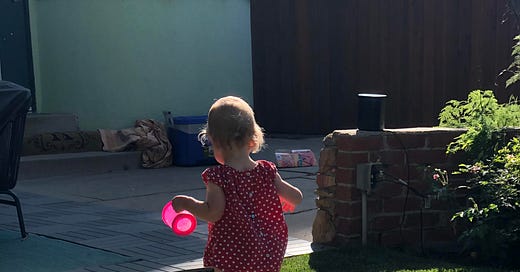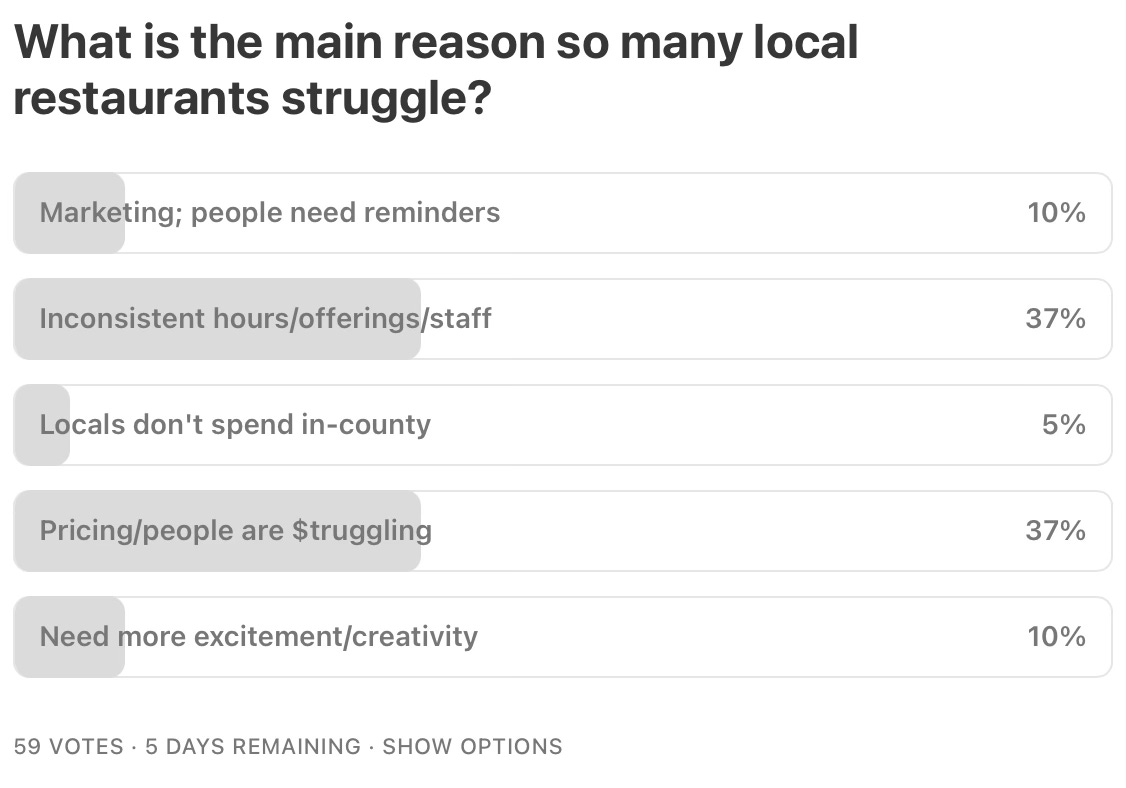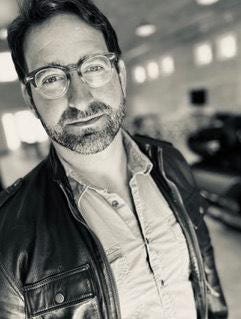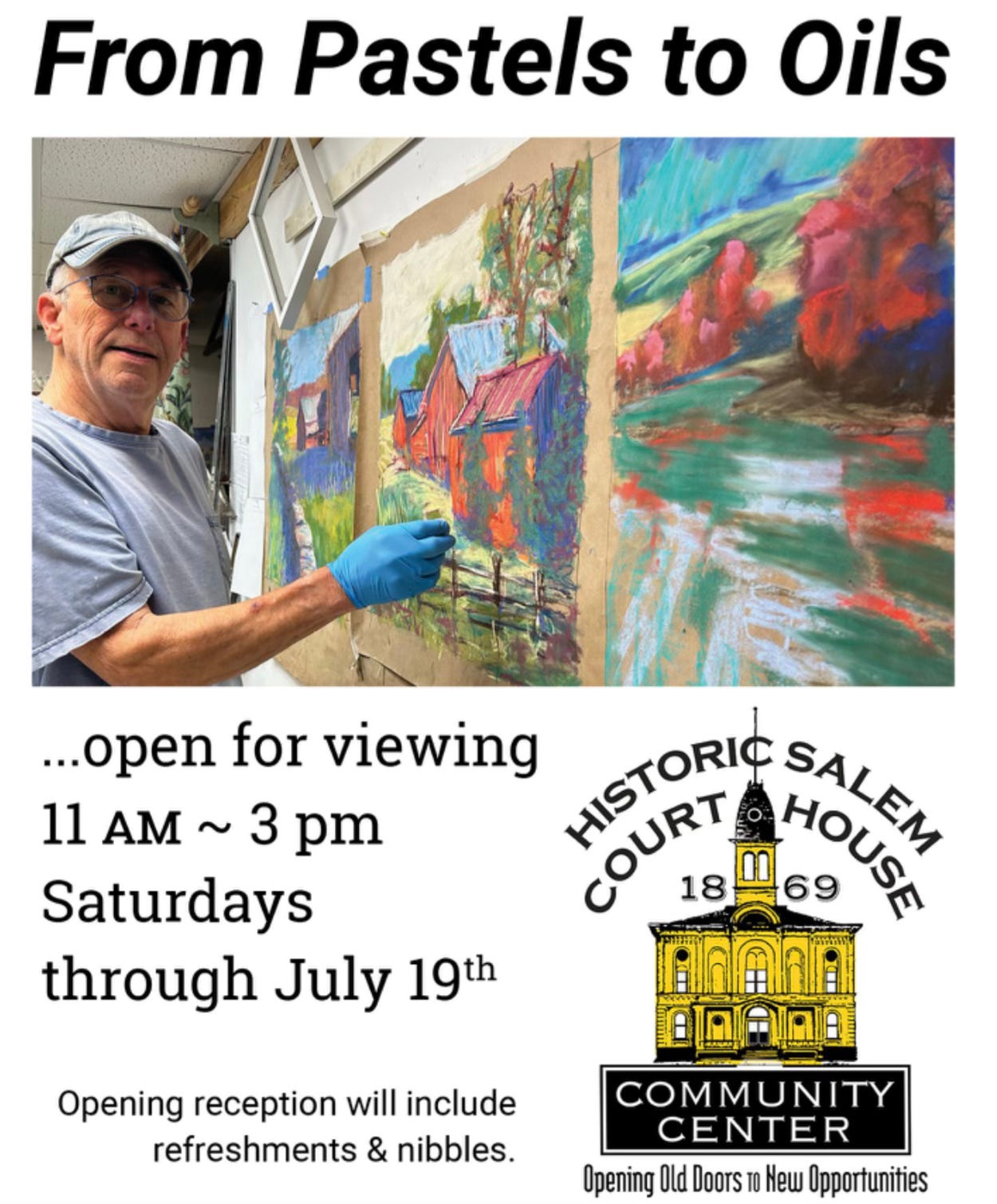Today, we will offer a poignant piece written by “Old Newbie” columnist Eric Kufs, but first let’s look at the results of the poll in yesterday’s provocative post concerning the difficulties local restauranteurs face.
There’s still time to vote in this poll (click here). We’ve gotten some feedback to the post from a local restauranteur, and we’ll analyze the results tomorrow.
After the Old Newbie column, take another poll!
The Old Newbie: Mr. Manuel
By Eric Kufs
Journal & Press
He would call me Mister Eric. Even when I would beg him emphatically, “Please, Manuel, call me Eric.” He’d wind up leaving a message the following week on my voicemail. “Mister Eric, is okay if my guys come by on Tuesday instead of Wednesday to cut the grass?”
Manuel had a landscaping crew that covered a number of houses in our Los Angeles neighborhood of Eagle Rock. Like any good community member, he also had clients on his own block and on streets adjacent to his house in Inglewood, far southwest of our neighborhood.
I had gotten his number from my neighbor Mark, who said he was reasonably priced and dependable. There wasn’t much to do in our yard anyway, aside from blowing the leaves from the gigantic Chinese Elm that stood in our front yard, providing the lion’s share of shade for our house, which rested on a hill slightly above the street.
Manuel would come with his guys every second Wednesday to make some noise with their weed whackers and leaf blowers in the blazing LA sun, baseball caps on and long sleeve shirts soaked with sweat and covered in grass stains. They’d do their trimming and edging routine and then someone on the team, usually Manuel himself, would roll up a push mower to buzz the five-foot-wide strip of sun-scorched grass that ran the length of our house. After this unnecessary performative gesture was completed, an invoice would be slipped in the screen door. If I were home, I’d go chasing after him with my checkbook in hand to make sure he got paid.
One day in spring of 2019 I had followed him down to our driveway to give him a check and to ask him a question. I caught him just as he was rolling the mower up onto the bed of his truck.
“Manuel, hold on.”
“Yes, Mister Eric.”
“Call me Eric, okay?”
“Si.”
“Manuel, I was wondering, have you ever done any bigger projects for your clients?” He looked at me, slight confused. “You know, planting hedges, making patios…” I said.
“Oh! Yes! Of course we can do that. You want me to make you a garden?”
“Something like that. Do you want to come take a look at the yard?”
In the back corner of our tiny square of a backyard, a dear friend and I had recently built a ten-by-twelve shed, complete with a custom pitched roof, glass doors, and sliding windows, to be my music studio and office. When I say we built it, I mean he did. He designed it, dealt with the city’s permitting process, hired any necessary laborers, and did most of the back-breaking work. Some days I stood beside him, handing him tools. When completed, this elegant shed stood firmly surrounded by nothing but a patch of dirt. It was clear to me that such a work of art, a monument, a testament to my friendship with its architect and builder, needed to be honored with some greenery. The problem was that I had spent most of the “green” on the shed itself. There wasn’t much savings left to make a proper garden. This is where Manuel stepped in.
We stood, hands on our hips, surveying the yard. I told him I wanted grass with a sprinkler system, a path with river stones and smooth pavers running from the patio to the door of my man cave. The path had to be lit with low voltage lights. On the sides of the shed I wanted short boxwood shrubs and along the back fence a taller hedge, both with low, soft lights. After discussing the specifics for a while, with Manuel taking notes, he said he’d get back to me in a few days with a quote. I told him how much I had left to spend, and he said, “No problem, Mr. Eric, we’ll make that work.”
Within a week I received a call from Manuel telling me what he’d charge. I agreed to the very reasonable cost, and he said they could start work in two weeks. But two weeks came and went without word from Manuel. This was strange because when he was working on the quote, he had called a several times to confirm the type of sod, river rocks, and boxwood plants. After the third week, I left a message on his voicemail. When his crew came to do the weed-whacking, I asked them where the boss had gone. Each one of them shrugged. They kept showing up without him.
A month passed before I heard from Manuel. When he called, he was extremely apologetic, saying he had to travel out of the country to deal with some family business. It wasn’t until later, in person, that he told me exactly what had happened. He explained that his mother and father, both in their seventies, had been murdered by gang members in Honduras, shot dead and left to bleed out on their front porch in broad daylight. Apparently, their home and access to the surrounding property was desirable to the leaders of one of the most notoriously violent gangs in Honduras. Manuel had been called back by his brothers and sisters to help bury his parents. He couldn’t afford to take anyone in his immediate family with him. There wasn’t much international cell service available. And I’m sure the last thing he wanted to talk about in that moment was my man cave garden project.
A few days after returning from what had to be the worst trip of his life, Manuel set his focus back to work. Within a month I had a picturesque suburban sanctuary for the tiny shed that held my guitars and recording gear. I was so thankful to look out the kitchen window at the carefully manicured lawn and hedges, along with the single white rose bush he planted in a small patch of dirt by our bottlebrush tree, so it would climb its crazy trunk like an ornamental vine. Less than a year later, this humble arboretum would be where I would walk barefoot to work, teaching college classes on Zoom in my now “office” shed, and my daughter would take many of her first steps along the path and sit in her kiddie pool in the afternoons of the summer Covid lockdown. That yard was all she would know of the world outside our house for that second year of her life.
Manuel had a daughter too, and a few other children, all much older than mine. Over the few weeks he was working on the yard, we had some personal chats, enough that I could gather that he had been living and working, building a business as well as a family in Los Angeles for over twenty years, just about as long as I’d been living there.
I never thought to ask him if he had come to the United States legally, if he was a citizen, or if he had a proper work visa. That wouldn’t have entered my mind. It didn’t matter. Mister Manuel had clearly established himself as a member of a community, one who was in the business of making the lives of his clients, friends, and family better through his dedication to his work. As a transplant, he didn’t just respect the American spirit, he embodied it. And that’s more than many of us privileged enough to be born here can say for ourselves.
Eric Kufs is co-owner of Owl Pen Books, freelance writer, local teacher and musician. A Greenwich resident, he offers perspective as a transplant and relatively new member of the community.
Tom Kerr Art Review
By Gerry Cuite
Special to Journal & Press
Tom Kerr’s show at The Great Hall Gallery in the Historic Salem Courthouse is open 11-3, Saturdays until July 19. Don’t miss it. Kerr’s send of composition and color are strong. His subject matter is familiar: barns, outbuildings, dirt roads, grasses and roadside vegetation. Kerr studied with McNeice, ( whose influence is obvious) Bohrer and Larsen.
About 30 works line the Great Hall, oils, pastels and watercolor. Four small, framed works are available in a silent auction beginning at $50.
Kerr’s work is generally in sunlight, a series of buildings, diagonal rooflines dominating. When painting a night scene, his work is equally successful because of his control of muted color and tone. The first painting on the right is a cluster of buildings. The roofs here blur into the air. Kerr expressed his sadness when he sees buildings in disrepair as they may "disappear", vanish. The afumato technique enhances his perception of threatened buildings.
The architecture of buildings relies on parallel lines. Kerr vitalizes the essence of his composition with meandering verticals: electric poles, fences, piles in his painting of Rockport.
Vegetation emerges in the foreground and background. Kerr does a persuasive job with tall weeds. His final stroke in a light color is a vertical, finished with a flurry, similar to a horizontal ampersand.
The titles confirm predominantly familiar locale. A walk through the show is akin to a drive through the neighborhood. Some will smile by a rendering named "Steininger’s"on Main Street, Salem. The entire show will follow the viewer out of the Great Hall, embracing the familiar.
Runs through July 19, 11-3, Saturdays.
And Now for the Comics … ‘The Middletons’ by Dana Summers
More tomorrow!










The story of Mr Manuel made me tear up .. I know some folks with similar family and work ethics .. and I fear for them in this time